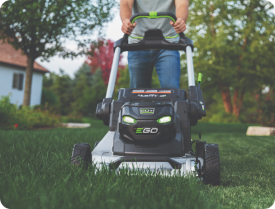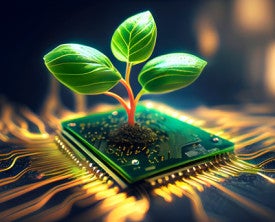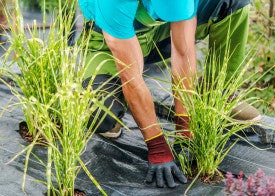Tips
- - June 30, 2023
Let’s set the record straight! When it comes to landscaping, it’s important to understand the reality of using landscape fabric. While it won’t completely eradicate weeds from your outdoor space (we all know those determined weeds can find their way anywhere!), there are a few things to consider. Here’s a summary of the points to keep in mind:
-
Weeds are persistent: Despite the use of landscape fabric, weeds may still find their way through cracks and crevices. It’s a natural process, and even the most resilient surfaces can develop some weed growth over time.
-
Disadvantages to consider: Many experts have shed light on the potential downsides of using landscape fabric. These include limited airflow and water penetration, which can affect plant health and lead to issues with drainage and root development.
-
Proper installation and maintenance: If you choose to use landscape fabric, it’s crucial to ensure proper installation and ongoing maintenance. This includes regularly inspecting and removing
-
- - February 08, 2023
As a resident of the East Bay Area, it’s important to know how to properly dispose of debris caused by a storm.
Fortunately, Bee Green’s construction and demolition debris, green waste, and inert debris processing facility provides an excellent solution for this. By utilizing their services, you can help divert recyclable materials from the waste stream and keep our community clean and green.
Here are some steps you can take to dispose of your storm debris at Bee Green’s facility:
-
Sort Your Debris: First, you need to sort your debris into different categories. Bee Green accepts green waste, construction and demolition debris, and inert debris. Be sure to separate these materials as best as possible, to make the recycling process easier and more efficient.
-
Check the Accepted Materials: Before you bring your debris to Bee Green’s facility, make sure you check the list of accepted materials. This will ensure that you don’t bring in any prohibited items, which can cause delays or even fines.
-
- - January 10, 2023
Winter Gardening Tips For The Bay Area
Even though the warm, summer days are long past us, you can still maintain a lush winter garden in Northern California. Consider the following gardening and landscaping tips, which are best completed during the months of January and February:
Plant Bare Root Plants
Bare root plants are typically dug up in the fall and then kept dormant in a cool space until they are ready for January planting. They are stored without being potted and without soil around their roots, hence the term “bare root planting” Bare root plants are a great option because they adjust quickly to new soil conditions. Additionally, due to the face that they are compact and easy to maneuver because they don’t have any soil, they can be transported efficiently. This means that they are typically cheaper than plants that come potted in soil.
January is the ideal time for bare root planting so that the plants are in their new soil while they are still dormant for the winter. Some
- - June 12, 2022
SB1383 Jurisdiction Procurement
CalRecycle has posted their final regulation text for Short-lived Climate Pollutants (SLCP): Organic Waste Reductions. Oftentimes referred to as SB1383, these regulations require jurisdictions to procure a certain amount of recovered organic waste products each year. We carry several products (mulches and compost) that qualify towards those Procurement Targets.
Our compost and mulch products (Red Mulch, Brown Mulch, Black Mulch, Black Mini Mulch) are sourced from 100% recycled organic matter (with a non-toxic colorant added) and meet the criteria established for compliance with the SB1383 regulations. See the attached Certification Letter.






